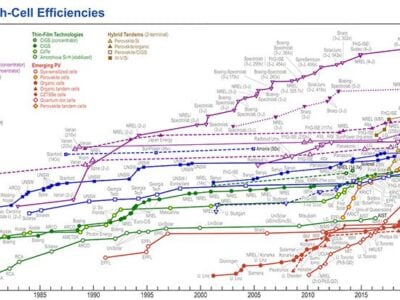
More accurate battery “fuel gauging” – chip meets MIPI BIF standard, adds authentication
In order to accurately determine its charging state, the battery needs to relax in a no-load condition between one and two hours. Only then the Open Circuit Voltage (OCV) can be used to re-calibrate the fuel gauge and correct errors. However, functions such as internet browsing, navigation, and video streaming along with self-updating apps such as Facebook and Twitter lead to almost constant power consumption while charging cycles become shorter and more frequent.
ORIGA 3’s PrediGauge technology improves consumer satisfaction by accurately determining remaining battery capacity under these most adverse conditions. Within a few minutes of battery relaxation it predicts the future OCV and therefore the charging state within an average accuracy range of 1%. This ultimately leads to increased customer satisfaction as the users of smartphones and tablet computers will be able to exploit the full battery capacity without sudden drops of capacity readings and unexpected shutdowns.

Additional functions of ORIGA 3 comprise precise temperature sensing as well as inputs for several sensors such as external temperature, strain gauge, and humidity. All information gathered by the IC is transferred to the host device (smartphone or tablet) using the MIPI BIF digital protocol. ORIGA 3 will be the first fuel gauge in the market compliant to this standard.
As with previous versions of the ORIGA family, authentication is the second key feature in the third generation. The growing number of functions in mobile devices requires bigger battery capacity and higher charging voltages of 4.35V or more. Unauthorised replacement batteries of poor quality – not designed to be charged at such voltages – may swell and even explode, causing damage or injuries and exposing manufacturers to legal risks and adverse publicity. The hardware authentication feature of ORIGA 3 helps to identify unauthorised batteries, thus protecting both customer safety and OEM brand image.
The ORIGA 3 authentication is based on an enhanced version of elliptic curve cryptography (ECC). It includes the ORIGA Digital Certificate feature which has already been introduced successfully with ORIGA 2 and allows for individual keys for each chip. In addition to that, the third generation enables secure field updates of the firmware. This feature helps to better protect customers from hacker attacks.
J.D. Power found that battery life is one of the most critical factors for customer satisfaction in smart phone usage (U.S Wireless Smartphone and Traditional Mobile Phone Satisfaction Studies, Vol.1, Mar 2012).
Infineon; www.infineon.com/ORIGA3
 If you enjoyed this article, you will like the following ones: don't miss them by subscribing to :
eeNews on Google News
If you enjoyed this article, you will like the following ones: don't miss them by subscribing to :
eeNews on Google News




